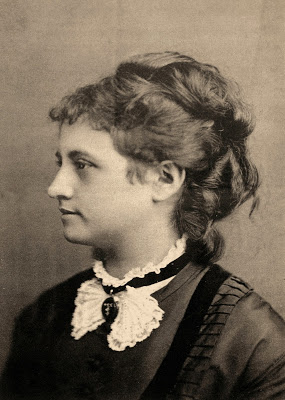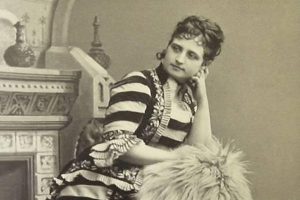
REVIEWS
“THE VIRTUOSO VENEZUELAN PIANIST CLARA RODRIGUEZ” The Daily Telegraph. London

Photography by Antolin Sanchez
“In a packed Saint John’s Smith Square, the soloist in Rachmaninov’s Third Piano Concerto was Clara Rodriguez who gave a flowing and committed account of the demanding solo part shrewdly revealing the works rhetorical contrasts in playing that was by turns brisk, lively and sympathetic.”
Robert Matthew-Walker. Musical Opinion 2007
“This music needs an empathetic spirit to show it to its best advantage and Clara Rodriguez provides performances of alluring vivacity allied to that most essential of requisites-CHARM. Highly recommended” Jeremy Nicholas. Gramophone Magazine
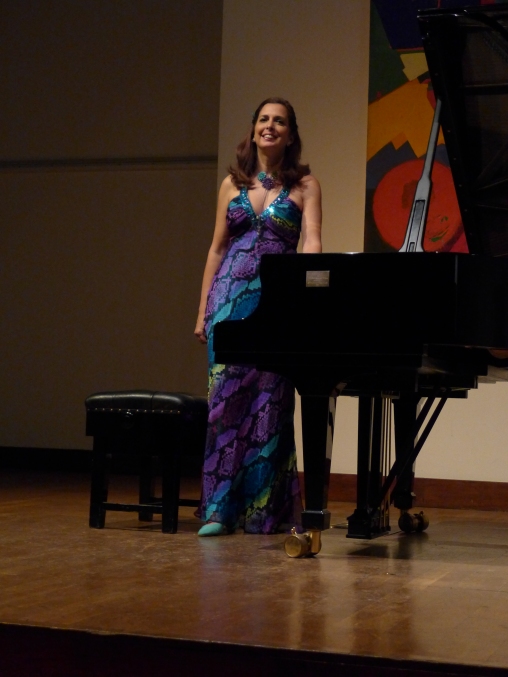
Photography by Sogand Bahram
“Clara Rodriguez at the Wigmore
Most of what Clara Rodriguez played to a full Wigmore Hall on 20 December was marked by the sheer beauty of her tone.
Having tuned herself in with the sixth of Mompou’s Cançon i dans she gave a wonderfully clear and precise account of Mozart’s Sonata in B flat major K 333. In parallel to this the Polonaise-Fantaisie, one of Chopin’s most rarefied works, was led into with the B major Nocturne Op.62 No 1. This latter, with its long skeins of trills, elaborate decorations and fairly radical harmonic departures, is itself a demanding task yet Clara Rodriguez understood Chopin’s music extremely well…deep and heart felt performances.

This seemed equally true of the South American composers who filled the recital’s second half. Bagatelles by the Argentinian Rosas Cobian were colourful and pianistically resourceful. From Brazil, Villa-Lobos’ Dansa do Indio Branco was in contrast insistently rhythmic, even noisy. It was back to colour and sensitivity in Antonio Lauro’s Canción and Seis por derecho in which Rodriguez’s playing was especially refined. The concluding piece also a Joropo, the most characteristic dance of Venezuela, was the rhythmic Zumba que zumba which is dedicated to the recitalist by Federico Ruiz.” Max Harrison. Musical Opinion.
“Clara Rodriguez is an excellent pianist with vitality, clean technique and command of tonal nuance ”
Lionel Salter. Gramophone Magazine
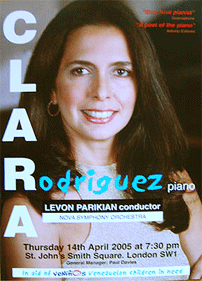
“Her Mozart KV 333 was a demonstration of virtuosity and brilliancy within a strict gallant style.Her version of Chopin’s Polonaise-Fantaisie (1846) was animated by a genuine dramatic sense as well as being instinctive and spectacular”
Simon Corley. PARIS-INVALIDES
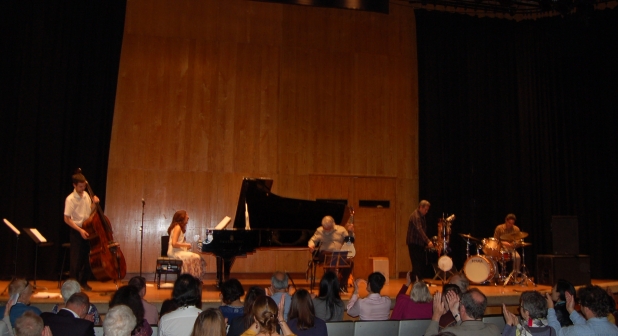
“Venezuela” on Gramophone Magazine October 2010
Astor Adriana, Bor Fuga, Juangriego. Camacaro Diversión, Don Luis. Castellanos Mañanita caraqueña.Diaz Caballo viejo. Escobar Noche de luna en Altamira. Fernandez Diablo suelto.Gutiérrez Alma llanera. Laguna Creo que te quiero. Lauro Canción, Vals criollo, Seis por derecho. Núñez Retrato de Ramón Delgado Palacios. Pacheco El cumaco de San Juan. PaesanoPajarillo, El porfiao. Delgado Palacios La dulzura de tu rostro. Ruiz Aliseo, Zumba que zumba. Teruel Destilado de vals. Vollmer Jarro mocho, El atravesado. Yanez Viajera del río
Clara Rodríguez pf Nimbus Alliance NI6122 (74′ . DDD)
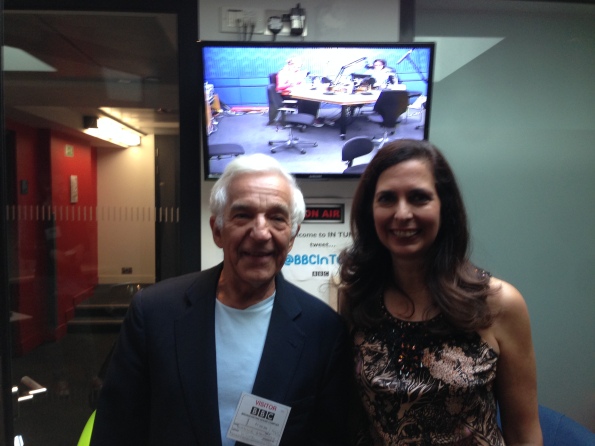
Vladimir Ashkenazy and Clara Rodriguez at BBC Radio 3
“Dances that show that there is more to Venezuela than El Sistema… Their harmonic language is conservative, ranging from mid-19th century European, highly reminiscent of Gottschalk, through to the jazz-inflected idiom of Antonio Carlos Jobim, with frequently maddeningly catchy melodies and rhythms that are almost all dance -based.
The music might be undemanding to hear but it is certainly not undemanding to play; and, as with her previous engaging disc of her compatriot Teresa Carreño, Clara Rodriguez makes the most of her innate feel for the exuberant and languorous, dispatching the toe-tapping cross-rhythms with panache and a light touch. Almost any of these, but particularly Paesano’s Pajarillo, Bor’s Fuga and Fernández El diablo suelto, would make a refreshing encore… This is a treasure chest from which to cherry-pick.The piano has been vividly recorded at Nimbus Wyastone Concert Hall … Miss Rodriguez’s chatty 12-page booklet with her enchantingly idiosyncratic English” Jeremy Nicholas
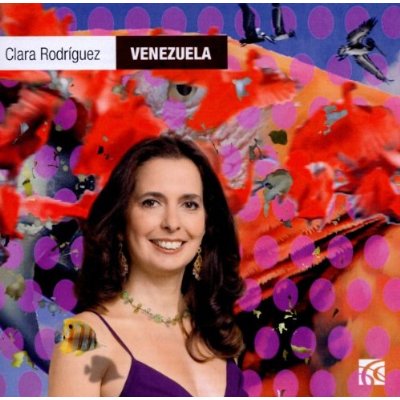
“Clara Rodríguez. The Purcell Room
A feast of Venezuelan dances is not the usual piano recital fare, yet with just the right balance of ebullience and excitement, as performed by Clara Rodriguez, it enthralled a large audience of all ages, at the Purcell Room on March 22. Caracas-born and based in London, Clara Rodriguez is ideally suited to this repertoire, which straddles the line between light music and miniature character pieces. With her genial introductions she took us on a fascinating journey through unfamiliar territory, much of which she has recorded, most recently in the album VENEZUELA (Nimbus Alliance NI 6122). Her selection of some twenty-two joropos, waltzes and merengues, illustrated their distinctive stylistic amalgam of Americo-Indian, Latin syncopation and indigenous Venezuelan dances through vivid syncopation and cross rhythms. Reading from the manuscript scores, since much of the material awaits publication, Rodriguez gracefully managed the panoply of pianistic textures, polytonality harmonic surprises, deep bass melodies and sometimes soupy nightclub chromaticism, imbuing each simple form with its unique élan. As well as their compositions, even the names of the composers radiated musicality, as in the sentimental lyricism of Pajarillo by Luisa Elena Paesano (b. 1946) which opened the programme and a nocturne by Maria Luisa Escobar (1903-1985), contrasted by a brighter neoclassicism in film music by Federico Ruiz (b.1948), whose piano concertos Rodriguez has performed. More intriguingly modern dissonance in the waltz Adriana by Miguel Astor (b. 1958) linked him to the better-known Antonio Lauro (1917-1986) whose style, here shown to great effect in three pieces, with hints of Debussy, especially in the joropo Seis por derecho. A waltz by Ricardo Teruel (b. 1956) emulated modern jazz, in contrast to the more Lisztian romanticism of Federico Vollmer, Pedro Elías Gutiérrez (1870-1954) and Luis Laguna (1926-1984). Throughout, Rodriguez, bedecked in her golden Venezuelan dress, elicited from her instrument Chopinesque lyricism and caressing tone. Amidst such a feast of delicacies, two stood out for their sparkling virtuosity and sheer sense of fun, Joropo by Moises Moleiro (1904-1979) and El Diablo Suelto by Heraclio Fernández (1851-1886) which pulled no punches in piano panache, while two more delicious encores by Ruiz and Paesano, brought this entertaining programme full circle”.
Malcom Miller. Musical Opinion. London 2010

“What a treat was in store for the gratifyingly large audience at the Purcell Room last autumn. There was a pianist of rare quality to meet us with grace of demeanour and palpable pleasure in her very special brand of musicianship. Her name? Clara Rodríguez; not a newcomer, but one whose return to the South Bank had been rightly anticipated with eagerness by former admirers. And why is she so special? She can and does play softly, with a range of nuance between pianissimo and mezzoforte of rare subtlety, of the kind which makes the music steal upon the ear like vibrations from another world. We heard Schubert’s Sonata in B flat D960, played as the essay in quietude which it surely is: all four movements differentiated in the most perceptive of ways, and the whole producing an unforgettable spell of unsullied beauty. This came after an opening of a group of so-called Children’s Pieces by the Venezuelan composer Antonio Estévez music of character and charm. Later we heard Poema Singelo by Villa-Lobos, a beautiful study in shifting sonorities. Finally came a riveting account of Chopin Sonata in B minor Op.58 magical in its unforced poetic feeling and clarity of articulation.”
Geoffrey Crankshaw. Musical Opinion. London

“Rodríguez played Liszt B minor sonata with breath and power” The Independent. London
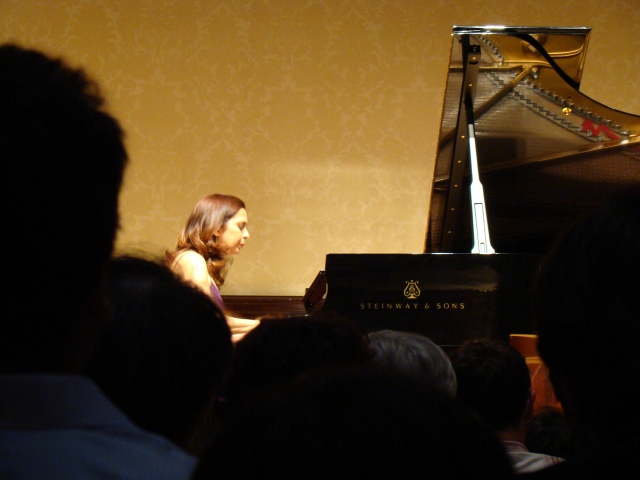
VENEZUELA: Clara Rodriguez Nimbus Alliance NI 6122
Classical Music Magazine
“Pianist Rodriguez’s latest excursion through the music of her homeland encompasses 25 works from 18 composers, so one expects sweet little lollipops.
There are plenty of them, but waltzes from the likes of Federico Vollmer or Pedro Elias Gutierrez have a melodic subtlety to delight Debussy. Federico Ruiz offers jazzy urbanity and virtuoso display abounds, admirably presented by Rodriguez.”
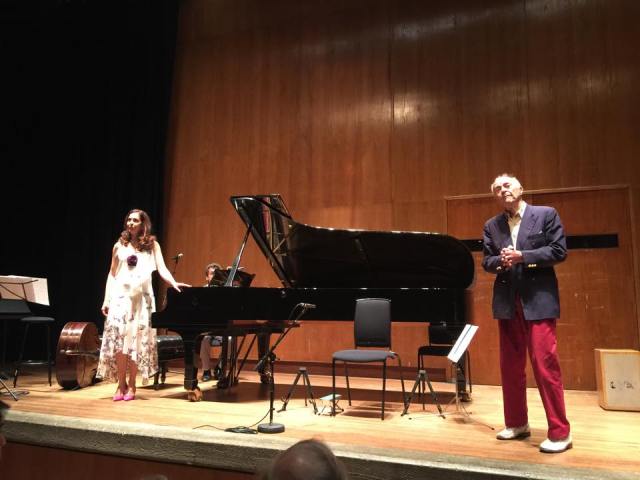
CLara Rodriguez and actor Trader Faulkner at the Southbank Centre -London
“Clara Rodriguez again filled the Wigmore Hall on 27 June and the quality of the performance made this seem unsurprising. While producing the most beautiful and rich piano tones, her Albéniz pieces were romantically played, stressing the harmonic adventures (Almería), elusive reverie (Evocación) and making us aware of the echoes of ancient Andalusian cante hondo (EL Albaicín). The Venezuelan songs and dances were piquant, lively
and engagingly played…a commanding performance of the Chopin Ballade No 4 Op. 52 as well as the Allegro maestoso of the Sonata Op. 58 No 3 with a fuller response to the very different characters of the Molto vivace and the Largo. The lyrical beauty of this latter was finely nuanced and in the closing Presto the rhythm surged most excitingly”
Max Harrison, Musical opinion, London 2008
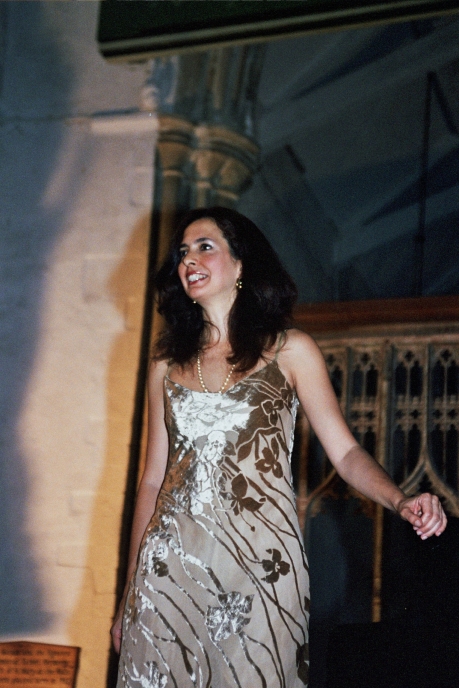
“A sparkling partnership, with a scorching repertoire from a really romantic pianist, Clara Rodriguez, balanced by Karin Fernald’s cool approach, narrating the life of the great Venezuelan pianist Teresa Carreño, so that we not only get the facts, but the feeling that she has been round the back and seen the funny side of the storm. Fresh air blowing through the hothouse”. Irving Wardle on Liszt in petticoats, The Times
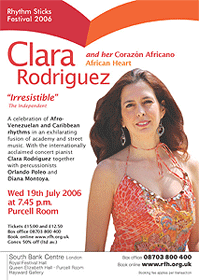
Clara Rodriguez and Friends | Southbank Centre: Purcell Room | Concert review | September 13th, 2011
http://www.bachtrack.com
London-based Venezuelan pianist Clara Rodriguez and friends brought the heady and exotic rhythms and sounds of South America to a windy Southbank in a delightfully relaxed concert of chamber music at the Purcell Room.
Clara opened the concert with a passionate and dramatic performance of Heitor Villa-Lobos’ ‘Impressoes seresteira’ (Impressions of a serenade musician), the second movement of his Ciclo Brasileiro , and a piece which suggests a “latin Rachmaninov” with its sweeping climaxes and soulful melodies. Afterwards, the friends, all fellow Venezuelans, joined Clara on the stage – flautist Efrain Oscher, guitarist Christobal Soto, bass player Gabriel Leon, and percussionist Wilmer Sifontes – and Clara explained that the pieces to be performed would take us on a musical journey “from Cuba to Argentina”. With evocative titles such as ‘A fuego lento’, ‘Mananita pueblerina’, ‘O voo mosca’ (“the flying fly”), and ‘Romance de Barrio’, and emcompassing genres such as Samba, Tango and Merengue, the music was by turns lively and foot-tapping, lilting and dancing, plaintive and haunting, humorous and witty, earthy and energetic. As the musicians, clearly good friends and music partners, settled into the performance, there was a wonderful sense of a shared experience: this was music for friends, performed by friends, amongst friends. The audience responded with enthusiasm, cheering and whistling, clapping loudly after each piece.
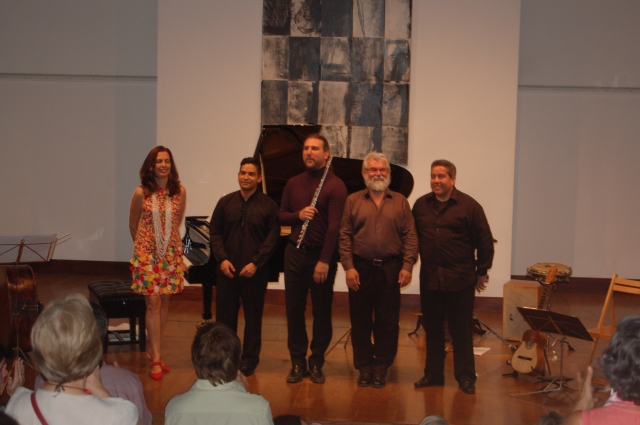
Clara Rodriguez, Gabriell León, Efrain Oscher, Cristóbal Soto and Wilmer Sifontes at Bolivar Hall -London
From the tragic Argentinian samba ‘Alfonsina y el mar’ (Ariel Ramirez), a tribute to Alfonsina Stormi, who committed suicide in 1938 by jumping into the Mar del Plata, through a spirited ‘Joropo’ (a Venezuelan folk waltz) by Moises Moleiro, ‘Caramba’, a tender and emotional “protest song” by a jilted lover, to Piazzola’s iconic piano tango ‘Adios Nonino’, written as a tribute to his dead grandfather, and a rousing and entertaining closing number ‘Capullito de Aleli’, by Puerto Rican Rafael Hernandez, the music, beautifully and expressively played, vividly brought to life the colours, sights and sounds of South America. At times, we could easily have been enjoying a chilled mint tea in a café in Havana in the 1930s, taking in the potent and emotionally charged atmosphere of a Buenos Aires tango bar, or enjoying a lazy Caipirinha overlooking the beach at Rio. Infectious syncopated rhythms from the percussion, the haunting strains of the flute, the flamenco-like strum of the guitar or mandolin, an elegant and vibrant piano, which, despite being a full-size concert Steinway, never dominated, this was music to savour – smoky and sensual, excitable, racy, heartfelt, hypnotic, buoyant and vibrant. For a few hours, at least, it was as if we were all on holiday together.
Frances Wilson
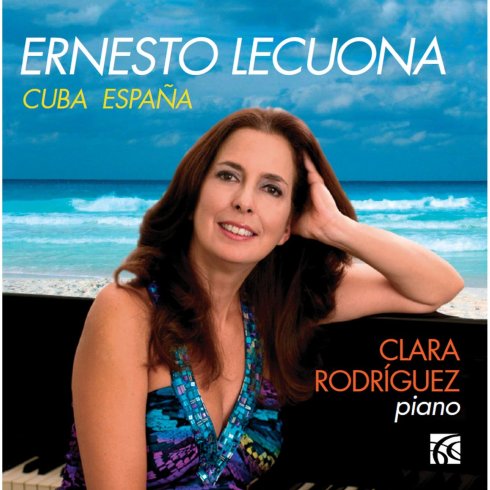
“South American Belle” A portrait of Clara Rodriguez by Bill Newman. (Excerpt) Music & Vision
“This whole business of placing a concert pianist in a special category may spell taboo to piano buffs, but the thoroughly vivacious Venezuelan-born Clara Rodriguez has several unusual slants to her artistry. And a growing number of appetizing programmes, all containing intriguing titles to whet people’s appetites and dissuade them from returning home afterwards…When I first heard her play it was at the Purcell Room of London’s South Bank…the challenge was there to create unusual colour contrasts between the usual classical fare of Liszt, in his famous B minor Sonata, and some exotic output of Moises Moleiro and Federico Ruiz, both represented on ASV CDs. Gorgeously dressed to match the occasion, Rodriguez’s sensuous playing did everything to vitalize the constant admiration of senior music critic G. Crankshaw, and brought forth much praise from my fond colleague, Phyllis Sellick.
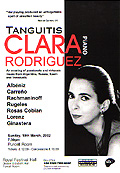
The Liszt on this occasion was persuasively different to artists unleashing tonal forces, their portentous architectural exaggerations pummelling the listener’s senses into a state of nullified submission. It was reflective and tender, each new subject and harmonic strand treated with natural respect, and a visionary understanding of their correct place within the whole. One didn’t require to express plaudits following it, but just to give thanks for revealing the music’s inner message…”
Bill Newman
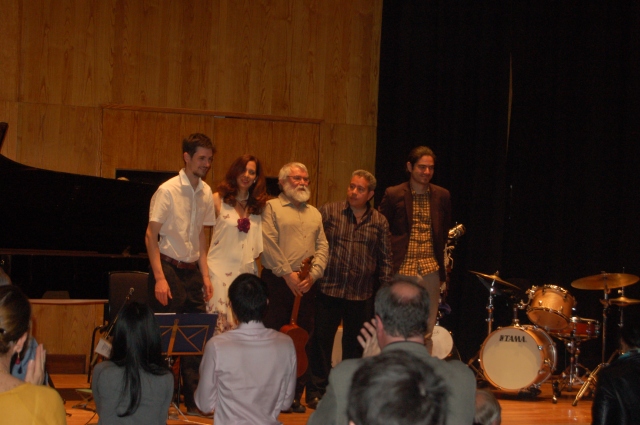
RODRIGUEZ- CHOPIN CD
“The performer’s qualities excel in this representative selection of Chopin’s output.
Clara’s unique style totally captures Chopin’s pianism; she is sufficiently precise and meticulous to happily give way to expression, variety and the aesthetic brilliancy that belong to this music. From the opening of the Third Sonata the perfect control of Chopin’s language is felt, in the chiaroscuro which navigates through the two Mazurkas, in the highly sensitive rubati of one of the best ever readings of the Fourth Ballade, in the freedom and fluency of the scales and melismas of the Nocturne Op. 62 No 1, in the just gradation of tone that takes us to the outburst of chords in the Barcarolle Op. 60, my favorite piece of the CD. There is a careful and abundant atmospheric offering in the piece that closes the recital, the Polonaise-fantaisie Op. 61. Rodríguez adds to the Polish eloquence reflective passages, density, and mellowness of tint. All constructed with feminine delicacy.” Einar Goyo Ponte. El Nacional.
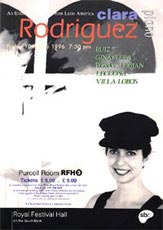
“On her disc of the Piano Music of Moises Moleiro his compatriot Clara Rodriguez plays both sensitively and rousingly. Of all the outstanding discs of this week, this one is my favourite for its fresh novelty.”
Cork Examiner. Ireland
“Moises Moleiro’s music is defended with enthusiasm and considerable grace by Clara Rodriguez. She has a highly articulate touch and a fine control of dynamics that are a pleasure to hear. A charming choice of programme that may prove even more interesting for introducing a very talented young artist. This CD is as vibrant and colourful as anyone could wish.” CD Review
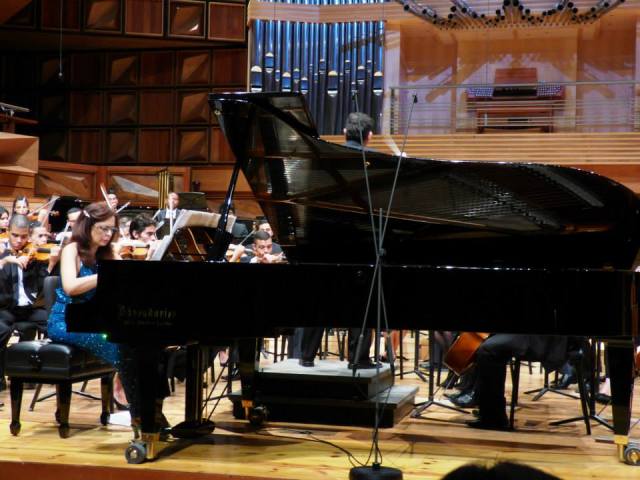
“The Venezuelan Teresa Carreño (born in Caracas 1853; died in New York 1917) was, with Clara Schumann, the most celebrated female pianist of the 19th century. Most of these works are self-evidently morceaux for the salon, but superior specimens of the genre, requiring a pianism above the ordinary and showing a complete technical command.
Clara Rodriguez is a sympathetic and enthusiastic interpreter. It’s a sure and agile touch. She invests all this highly agreeable music with vibrant life. The recording is superb.”
PIANIST MAGAZINE Selected Discs
Teresa Carreño Piano works. Caracas MMG

“What a Super performance that was! Those who came to see a virtuoso, were well served: they got a programme dense of very challenging pieces, a real ‘tour de force’ relentlessly unfolding before their eyes/ears. And those who came eager to catch a glimpse of Art, the Ineffable, the unspoken and unquantifiable, they got it too: a heartfelt performance delivered through a magic touch of limitless expressive power.”
Roberto Filoseta. Composer.
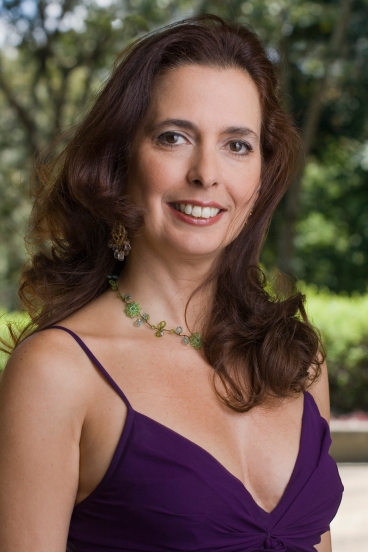
ERNESTO LECUONA. Nimbus Alliance.” This disc concentrates mainly on works by his Cuban and Spanish roots, encompassing influences from African and gypsy music. They are steeped in lyricism and mood. Phrases are vastly spaced, creating highly effective picture painting. On this CD, pianist Clara Rodriguez brings everything out with a great sense of mood and timing. This music is extremely enjoyable, very well constructed and, above all, wonderfully sunny. And on this disc it’s also very well played.” PIANIST MAGAZINE – SELECTED DISCS.
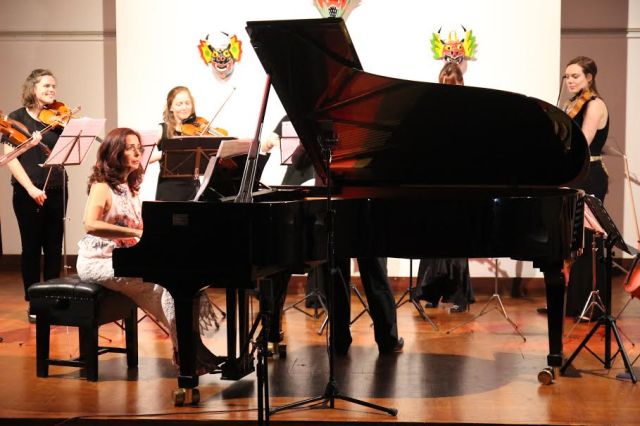
With the fitzrovia musicians playing Mozart Piano Concerto conducted by Michael Collins
“Her playing is an overwhelming whirl of intelligent and deeply controlled sounds led by an outstanding technique. She has a transcendental and volcanic temperament” Intermezzo. Paris
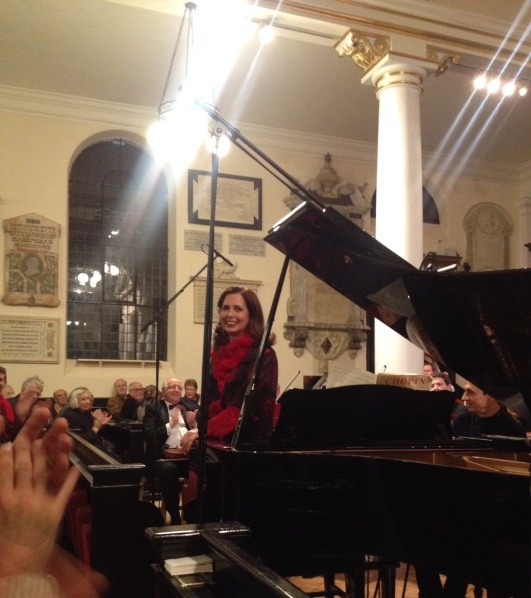
“This engaging personality played at the Purcell Room with style and address, bravura and startling accomplishment. I would like to see her lavish talent spread on, for example, Albeniz’s Iberia Suite” Musical Opinion. Geoffrey Cranckshaw
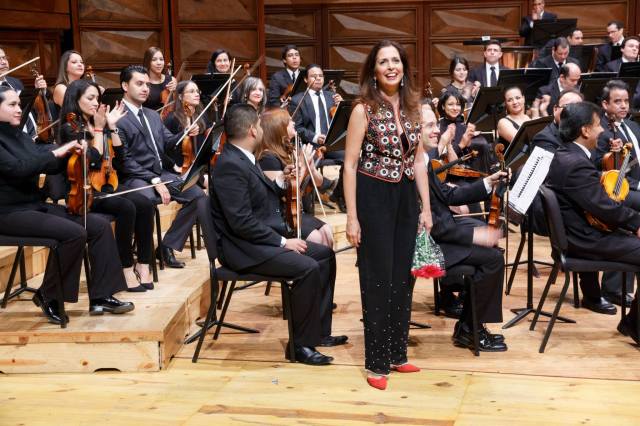
Playing Schumann Piano Concerto with the Simón Bolívar Orchestra under Jordi Mora
“Three exquisite encores followed Clara Rodriguez’s distinguished interpretation of Mozart’s KV467, all sparkling and brilliant and received with strong applause. Her performance of the concerto was no less impressive, especially the famous Andante, played with a beautiful cantabile and rare emotion” La Press. Tunis
“Clara Rodriguez enthralled her audience” -Headline- Financial Telegraph. Delhi

“Clara Rodriguez plays the music from South America like no other pianist, with a marvellous sense of phrasing, poetry and sparkling dynamism. This music belongs to her” Arioso International. Saint Quentin. France

“Clara Rodriguez knitted a watercolour-tone landscape that resulted in a privileged performance of the Reynaldo Hahn Piano Concerto in E major. She defined beautifully the composer’s sensitive and lyrical profile with pearly articulation and just the right kind of virtuoso touch” El Mundo. Caracas
“Clara Rodriguez’s opening with Scarlatti sonatas showed immediately the subtlety of colour and phrasing which are a revelation in all her playing. She has the winning personality of a born communicator, her rapport with the audience is totally engaging. In a word: she has charisma” Roger Oliver. Kensington Arts
“A real artist and a thorough pianist. She has the secret of making the piano sing. Her playing has rare elegance, poetic lyricism and a brilliant technique” Cahier de critic. Paris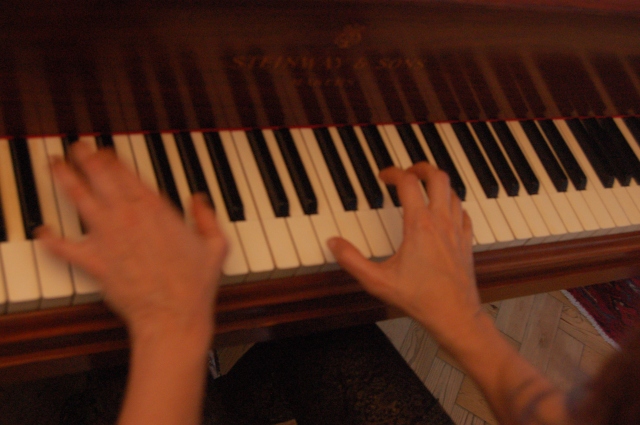
“Her chiselled, exquisitely sculpted notes, the intensity and passion she imbued her performance with were the key to the unqualified success of her concert where she revealed to the many music buffs present the richness and complexity of the classical Venezuelan music.” The Pioneer. Delhi
“The renowned pianist Clara Rodriguez” Time-Out Magazine. London
“The extraordinary pianist Clara Rodriguez demonstrated her excellence not only thanks to her clear and precise technique but also in the expression of her feelings and sympathy for the music she played” El Gusano de Luz. Caracas.

“Moonlight Sonata by candlelight” at St. Martin-in-the-Fields -London
“Tanguitis” quite literally translated as “illness of the Tango” proved to be an ailment worth experiencing. The Purcell Room filled with recognizable symptoms of Hispanic rhythms, sensual harmonies and folk influences as Rodriguez introduced the first of the seven-featured composers for the evening. The performance opened with two works by Venezuelan composer and icon of her time Teresa Carreño (1853-1917). Both taxing pieces with a tendency to leap between extreme registers were performed with agility; leaving the listener quite possibly thinking more than two hands were at the piano. Rodriguez’s performance was particularly refreshing in the choice of repertoire. The collection of works leaned heavily towards South American and Spanish composers, but with a mix of traditional and contemporary influences. From the humour and sensitivity of Rugeles’ Tanguitis to the sparseness and atonality of Cobian’s Voices: 2, Rodriguez’s execution of this diverse range of compositional styles was deft and enlightening. The movement generated by the alternating rhythms and the humour of the pieces (which Rodriguez is so adept at drawing to the surface) were accomplished seamlessly.
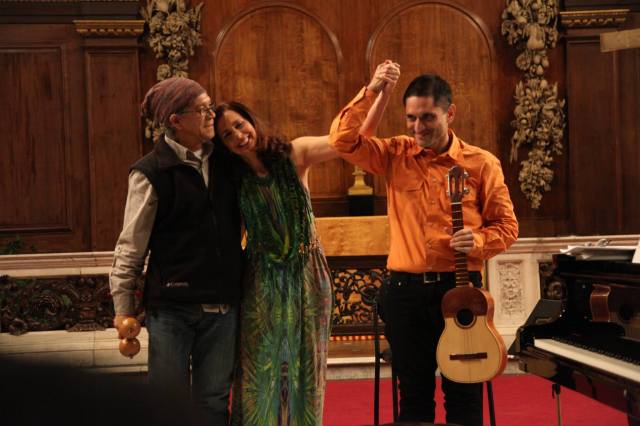
Clara Rodriguez with Nené Quintero and Edwin Arellano at St. James’s Chruch Piccadilly
Her playing has a freshness and intensity that conjures up the evocative nature of these works, whilst never leaving authenticity behind…”Halenka Bednar. LondonNet Classical
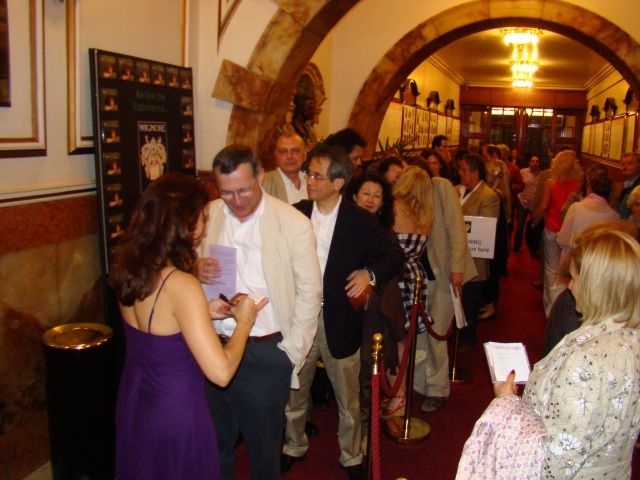
Signing autographs at Wigmore Hall
“Play the last track on this disc for a friend or significant other. Probability of recognition is high, for it is an all-time favorite hit, Malagueña, from the Suite Andalucia. Ask who wrote it, though, and you’re more apt to draw a blank. The answer is Cuban composer Ernesto Lecuona, who was born just outside Havana, and lived from 1895 to 1963. In his day, Lecuona was an immensely successful musician and a quite prolific composer. He wrote literally hundreds of works, mostly for piano, but also songs and zarzuelas. He graduated in 1912 from the Havana Conservatory, and in 1916 came to New York, where he appeared in recitals as an accomplished virtuoso pianist. Word traveled west, and by the 1940s Lecuona was on the payrolls of MGM and 20th Century Fox writing scores for Hollywood films. He won an Academy Award in 1942 for his song Always in My Heart. Back in Cuba, he founded the Havana Symphony Orchestra and a ballroom dance ensemble he named The Lecuona Cuban Boys Band.
![DSC_2296[1]](https://pianistclararodriguez.files.wordpress.com/2017/12/dsc_22961.jpg?w=640)
Spanish, Latin American, and Cuban melody and dance rhythms are at the core of much of his music, but his education at the Havana Conservatory was a formal European one. He knew music history and his predecessors. Córdoba from the Suite Andalucia, for example, vacillates somewhere between a Schubert impromptu and a Brahms rhapsody. Ante el Escorial begins like Debussy’s La cathédrale engloutie, and soon takes on the character of Liszt. There is not a single item on this well-filled disc that is less than captivating, and most are beautiful precious gems.
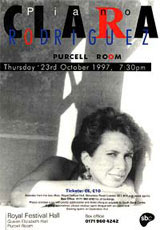
Pianist Clara Rodriguez began her studies in Caracas, where at sixteen she won a scholarship from the Venezuelan Arts Council to continue her studies at London’s Royal College of Music. She has been busy ever since, concertizing widely, and in 1993 founding the Teatro San Martin de Caracas Music Festival. This is a thoroughly enjoyable CD, and the sound, which I’ve complained about in previous solo piano releases, here seems to me to be perfect. Warmly recommended.
Jerry Dubins
(Jan/Feb 2005) Fanfare Magazine.![24271582_10210899164543816_1043933972_o[1]](https://pianistclararodriguez.files.wordpress.com/2017/12/24271582_10210899164543816_1043933972_o11.jpg?w=640)
“The impressive Clara Rodriguez” (Headline) Time-Out
“At the Purcell Room on Wednesday a large, Latin looking crowd for the Venezuelan pianist Clara Rodriguez. Of special interest here were two composers also from Venezuela.Moises Moleiro’s short character-pieces were like the 18th, 19th and early 20th centuries’ music all caught up at once: Scarlatti- meets –Albeniz sonatas and, in Pictures of the plains, a sequence of linked episodes like a nationalistic tone poem, full of robust and prolific melody. The Tropical Triptique by Federico Ruiz, written last year, was more oblique and sophisticated, again melodically fluent but blues-tinged, and headed for an original synthesis of Latin American and Caribbean types in its irresistible final dance”
Robert Maycock. The Independent. London
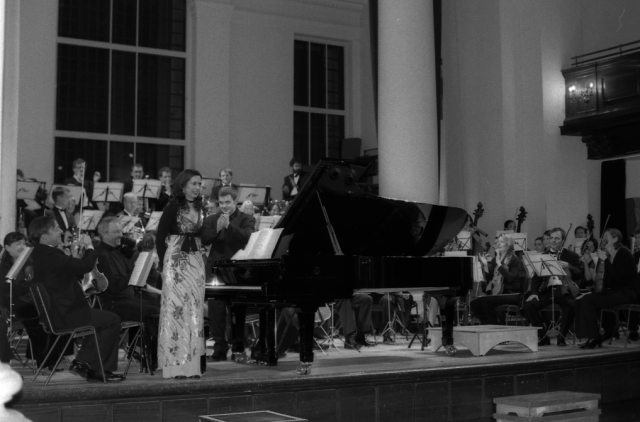
Clara Rodriguez at St. John’s Smith Square -London
“It would be hard to believe that this refined musician could not pave her own way amongst the excessive number of pianists of today. Miss Rodriguez possesses the means; her technique is brilliant and firm. The astonishing Ginastera Sonata No 1. Op. 22 brought out all the technical qualities of Clara Rodriguez, whose Latin ardour added to an impressive temper, have come out clearly without exaggeration or harshness. Her playing shows brilliancy and brightness. With the Chopin Sonata no 3 Op. 58 Miss Rodriguez did show the firmness of a rhythmical and toned direction. Her playing was clear, transcendent; ending in apotheosis, with sparkling and brilliant sounds. Undoubtedly, the Largo was one of the most beautiful moments of the evening with emphasised and majestic serenity. Indeed this exciting and passionate recital has revealed the triumph of a young and spontaneous, kind and agreeable pianist. Clara Rodriguez: a name to remember!”
Michael Georges. Paris
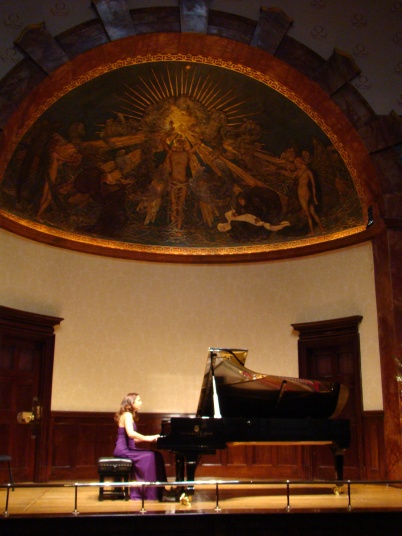
Clara Rodriguez at Wigmore Hall
“So Gustavo Dudamel is not after all the only Venezuelan to break into the international music scene. The pianist Clara Rodriguez is one of the most acclaimed soloists to come out of South America in recent years, and her career as a concert pianist has taken her to most European cities, South America, Asia and even Northern Africa. She also happens to be very popular with English audiences and performs regularly at Wigmore hall, South Bank Centre, the Barbican Centre and also St. John’s Smith’s Square. Although her discography includes the established elite of the piano, one finds a considerable number of recordings dedicated to composers from her native Venezuela, such as these 2 CDs under review.
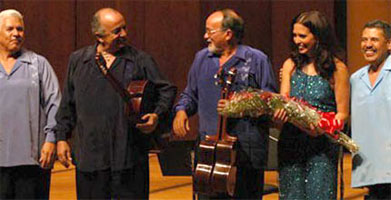
At the Teresa Carreño Theatre in Caracas with El Cuarteto
Teresa Carreño (1853-1917) was a highly talented and much sought after composer, composing some 70 works for the piano most of which were written and published in Paris when still in her teens. All the works on this programme reveal Carreño as a great romantic spirit, and all the pieces are full of evocative touches which are both intimate and reflective. Joyful moments are not amiss either.
Moises Moleiro (1904-1979) is a more varied breed. The works chosen contain practically all of his pieces for the instrument and his style is a mixture of French impressionism and Byronism. Although he too managed to form an international reputation, he is considered mainly as one of the mainstays in the musical life of Caracas, where he helped create a nationalistic style.
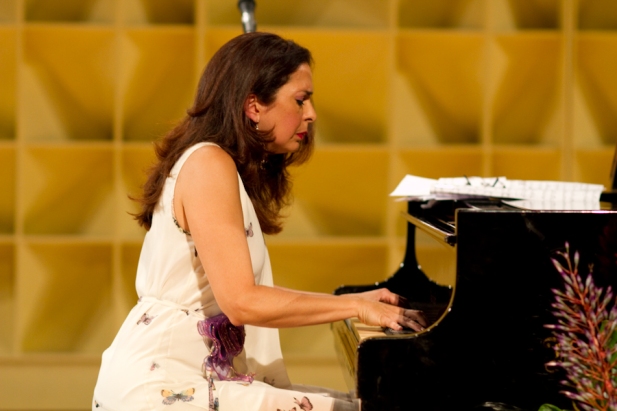
Two beautifully performed and recorded discs which should delight piano buffs and music lovers in general”.
Copyright © 2009, Gerald Fenech. Classical Net
“This appears to be a reissue of a recital previously available on ASV (ASV CD DCA 890), and recorded, I believe, in 1994. It is good to have it back in circulation, as it offers a well-played representation of an interesting composer.
Moleiro was born in Zaraza in Venezuela and in the mid 1920s he studied piano in Caracas with a well-known teacher, Don Salvador Llamozas. He went on to make a career as a pianist, composer and teacher. This present CD includes the bulk of the work he wrote for the piano.
Most of the music here is not strikingly Latin American in manner, although there are a few distinctive touches here and there which speak of its geographical origins. For the most part Moleiro’s piano music has about it a kind of aristocratic grace, and works within mostly European models understood from a South American perspective. At times one senses a kind of nostalgia for European forms and what they might represent. One is not surprised to encounter ‘El senor de la peluca’ – the gentleman with the wig – or to find oneself listening to a charming Waltz.
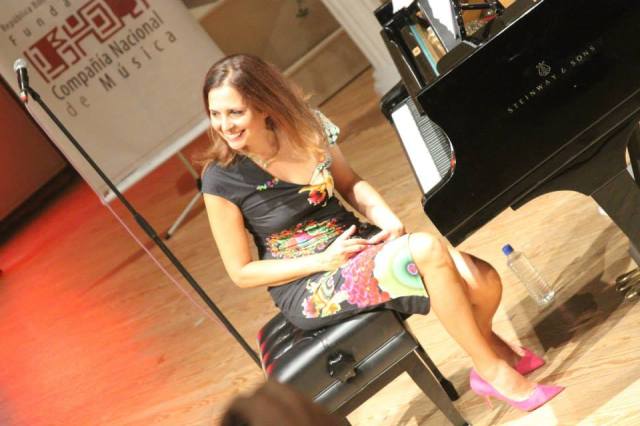
Moleiro’s Sonatinas are written in the tradition of Scarlatti (though being far from mere pastiche); his Prelude and Fugue in C sharp minor have more than a little of Bach about them; the Serenade in the Spanish Style speaks for itself; the Estudio de concierto has clear affinities with Chopin and the delightful La fuente registers its composer’s knowledge of Ravel and Debussy. But everywhere there is enough evidence of a personal sensibility at work to maintain the listener’s interest. At times Moleiro’s programmatic miniatures – such as La muchacha de la herrería (the girl from the blacksmiths), El herrero (The blacksmith) and Los pájaros (The birds) – are attractive additions to a familiar keyboard tradition.

The last two pieces on the CD are the most distinctive. Certainly Estampas del llano (Pictures of the plains) and Joropo are far more thoroughly infused with a sense of the composer’s native land, and without that nostalgic air mentioned above. Though the musical language of Estampas del llano is essentially European in nature, its evocation of the Venezuelan plains, in their contrasting fecundity and aridity, makes it music that no European composer would have written. The joropo music of Venezuela grew out of the fusion of ancient Spanish traditions, including the fandango and the malagueña (themselves incorporating Arabic influences) with the musics of African slaves and of native South American Indians. It is a heady mix and from it has grown some exciting music. A good deal of that excitement is captured in Moleiro’s Joropo for piano, played with considerable panache by Clara Rodriguez.
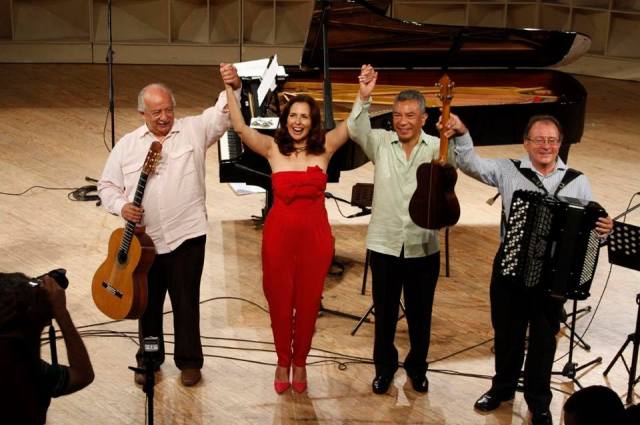
Miguel Delgado-Estévez, Clara Rodriguez, Eduardo Ramirez and Federico Ruiz
Throughout this recital the sureness of Rodriguez’ technique is evident, and her flexibility ensures that she can sound at home in all of the various musical idioms on which Moleiro’s piano music touches. This makes for a consistently entertaining programme – a CD that makes a case, without overstatement, for the music of a figure too little known beyond his native land.” Glyn Pursglove. Music Web International
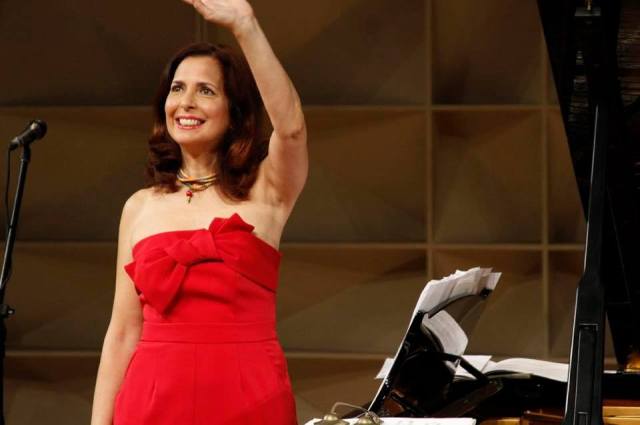
Charm, Diversity, Invention –a delight
“It is good to learn that there is more to the musical life of Venezuela than the ubiquitous Simon Bolivar Youth Orchestra and the charismatic Gustavo Dudamel, extraordinary though they may be. This is the first of a pair of delightful discs of Venezuelan piano music played by Clara Rodriguez, a talented young international pianist who studied initially with Phyllis Sellick at London’s Royal College. Moises Moleiro (1904-1979) drew inspiration from the plains of his Venezuelan homeland. His writing may not at first acquaintance be overtly Latin American in style, save for the occasional snatch of syncopation. Indeed it is often Bach, Scarlatti and Handel that come to mind, particularly in the sonatinas and toccatas. But there are hints of local colour throughout. The `Serenade in Spanish Style’ for instance clearly betrays the influence of the guitar. This is essentially a collection of miniatures, the shortest barely lasting more than a minute, the most extensive running to a full nine. Invention and diversity are the key words and there are delights at every turn. Stately waltzes rub shoulders with lively Handelian fugues, Satie-like lullabies follow moments of Chopin tinged nostalgia. There is humour and playfulness too – in `Los parajos’ (The birds) one can clearly picture the clucking hen scurrying about a farmyard, whereas the `C sharp minor Toccata’ is a light fingered moto perpetuo. To complete this most entertaining disc we at last have a true flavour of the country in all its exotically perfumed, technicolour glory. `Joropo’ is surely a piece crying out to be orchestrated – no doubt to be taken up by Maestro Dudamel as a rip-roaring, flag waving encore. A joyous disc, superbly played and well worth investigating. (Try Rodriguez plays Carreno/NI6104)”
Martin Furber. Amazon

Clara Rodriguez and Adrian Suárez
“A Heart warming disc”
This, the second of Clara Rodriguez’s discs of piano music from her native Venezuela is a particular delight. In essence the style is suggestive of those charming Edwardian salon pieces once so popular. Charming, unpretentious perhaps, but endlessly imaginative and always beautifully written for the instrument. Ms Rodriguez has this music in her bones and there are delights at every turn. Teresa Carreño was born in Caracas in 1853 and died in New York in 1917. She came from a well known Venezuelan family who were proud of their close links to Simon Bolivar (a name now of course indelibly linked to the extraordinary youth orchestra that bears his name). Mentored by Louis Gottschalk, she made her New York recital debut aged just eight and went on to tour the world, earning plaudits from the likes of Rossini, Grieg and Gounod. This is music to warm the heart, lift the spirits and very often bring a smile to one’s face. Toe-tapping polonaise rhythms and mazurkas give way to more contemplative pieces such as the charming lullaby dedicated to her father, or the poignant elegiac ‘Partie’ written when she was just fourteen to commemorate the death of her mother. The lilting ‘Venecia’, as its title suggests, is a gently swaying barcarole while ‘Un bal en Reve’ overflows with joyousness and bonhommie. But there is more to this disc than nostalgia and light heartedness. One of the more substantial pieces here is the ‘Une revue a Prague’, a full blown virtuosic concert study given virtuoso treatment by the pianist. This disc has been a real discovery. It is a collection with which to settle down in front of a warming winter fire.
Martin Furber. Amazon

Photography by Sogand Bahram
”Teresa Carreño was born in Caracas. She went on to make an important and successful musical career in North America and Europe as (primarily) a pianist of considerable reputation. She was also a singer and an occasional conductor, as well as a composer. Carreño was the granddaughter of Cayetano Carreño (1774-1836), composer, organist and choirmaster who played an important role in the musical life of Venezuela. Her own father, Antonio Carreño (1812-1874) was, by profession a banker and a diplomat, but also had a sound musical background and gave his daughter her early music lessons. Her mother, Clorinda Garcià de Sena y Toro was a niece of Simon Bolivar’s wife. Teresa was something of a keyboard prodigy. At the age of 8 she was taken to New York, where she studied with Gottschalk and gave public performances which attracted large audiences. One writer who attended her concerts wrote that “Little Miss Teresa Carreno is indeed a wonder … A child of nine years, with fine head and face full of intelligence, rather Spanish-looking (she is from Caracas) runs upon the stage of the great Music Hall, has a funny deal of difficulty in getting herself upon the seat before the Grand Piano, runs her fingers over the keyboard like a virtuoso, and then plays you a difficult Nocturne by Doehler, with octave passages and all, not only clearly and correctly, but with true expression … she plays Thalberg’s fantasia on Norma, full of all kinds of difficulties … with brilliancy, with nice shading, with expressions, her chords struck square and clean, like a master”.
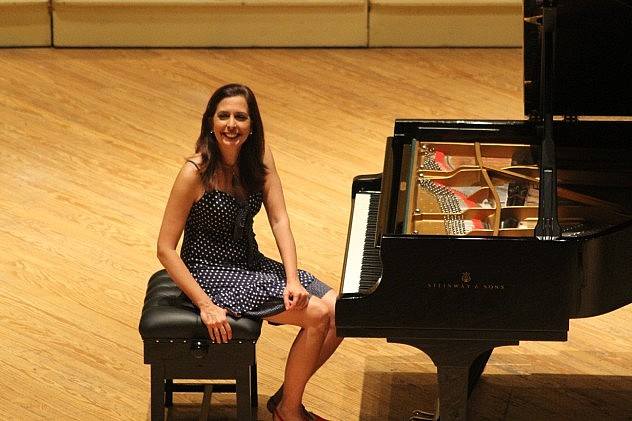
There followed further studies in Paris, with George Mathias and, later with Anton Rubinstein. In her earlier years she seems to have been a somewhat impetuous and fiery player she seems later – after a break from public performance, a break bound up with her complex marital history – she gained a reputation as a meditative player, whose work was characterised by genuine profundity. Evidence of her own playing exists only in the form of piano rolls.
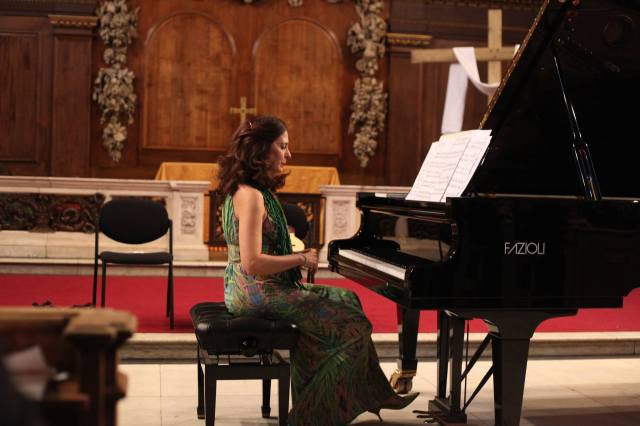
The excellent Clara Rodriguez here gives us a delightful sampling of Carreño’s own compositions most of which were apparently composed during her teenage years in Paris. The music will surely interest – and give pleasure – to anyone with a fondness for the nineteenth-century piano repertoire. There isn’t perhaps much of startling originality here, nor very much that betrays the composer’s South-American origins. The partial exceptions are Un bal en rêve, which incorporates the dance rhythms of the Venezuelan merengue and the Latin-tinged Vals gayo. Everything is very accomplished and each piece makes clear not only the considerable technique that the young Carreño must have had at her disposal, but also her sophisticated rootedness in the music of her age. Her Ballade has a dramatic poetry of a sort which no nineteenth-century composer would have been remotely ashamed. Le Printemps has a fine declamatory opening, an elegant waltz momentum, and a pleasing willingness to disrupt that momentum to subtle and expressive effect. Chopin would not, surely have been embarrassed to acknowledge either the Mazurka de salon or Un rêve de mer. The lovely Venise is pure delight, an exquisite barcarolle – this is a piece that deserves a place in the extensive canon of compositions inspired by Venice. Something positive can – and should – be said about every piece on the disc.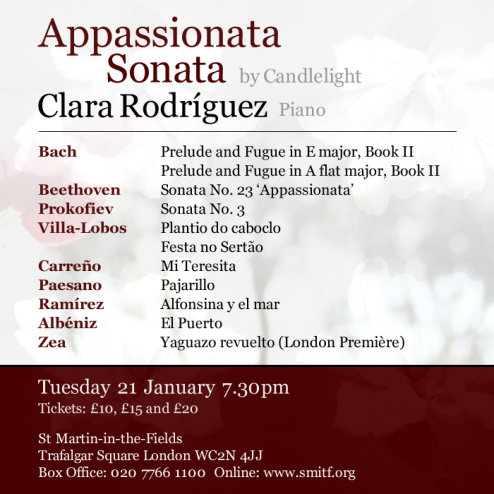
Clara Rodriquez plays with abundant vitality and a matching tenderness. Her performances carry a persuasive air of authority – this is clearly music which means a lot to her. Little of this music achieves any great emotional profundity unless it be Plainte, an elegy for the composer’s mother. It never fails to engage as it explores a variety of moods and tempi and is always full of character. “
Glyn Pursglove Music Web International
| “Venezuelan-born Teresa Carreño was one of the most fêted and tempestuous pianists of her day. She was married four times – her first husband was the elite violinist Emile Sauret, the third Eugen d’Albert, and the last was her former brother-in-law. She also composed, almost entirely morceaux, generally speaking written early on in her world-touring career. Though she didn’t record on disc she did make some piano rolls.
We get off to an ebullient start with Le printemps with its pert dance, which shows the composer’s powerhouse technical resources and ebullient, winning personality. Plainte (Queja). Elegía No. 1 is by contrast a more searching expressive work which enshrines a winning tristesse. The rolled chord drama and pomposo dignity that preface the Ballade lead to virtuosic roulades of Lisztian profusion, intensely pianistic and dramatic. The Intermezzo is a frisky genre piece whilst the skittish beat displacements and hesitations of La corbeille de fleurs give one a glimpse of her humour and wit. The Chopin-sounding Mazurka de salon is gracefully assertive. But she also mines – albeit in a limited expressive compass – more subcutaneous feelings in the Partie, written on the death of her mother when the composer was fourteen.
If contemporary players want a new sweetmeat to enlarge their encore repertoire they could do worse than to disinter that capricious salon charmer, La fausse note. Chopin haunts Un rêve en mer, and there’s tremendous brio in Kleiner Waltzer, whilst a saucy rocking rhythm inhabits Le sommeil de l’enfant. Whilst none of these pieces is especially brilliant they are all richly characterful and wholly pianistic, as one would expect from one of the acknowledged virtuosi of the day. Rather more interesting perhaps is Vals gayo with its touches of Latin Americana, a late work dating from 1910. What Une revue à Prague loses in its relative conventionality it makes up for in respect of its vitality and energy.
These last qualities are true of Clara Rodriguez who plays the recital in the wholly appropriate locale of the Teresa Carreño Sala José Félix Ribas, Caracas. The recordings date from 2002 so their appearance now – I’m not aware if they’ve had distribution before – is welcome. She plays moreover with verve and colour and unpugnacious style .I listened to the admittedly ambiguous results of Teresa Carreño’s own piano roll of Kleiner Waltzer [Welte Mignon 371, released on Pierian CD 0022] and even allowing for the jerky results, enough can be intuited to say that Rodriguez has done a splendid job all round.”
Jonathan Woolf |
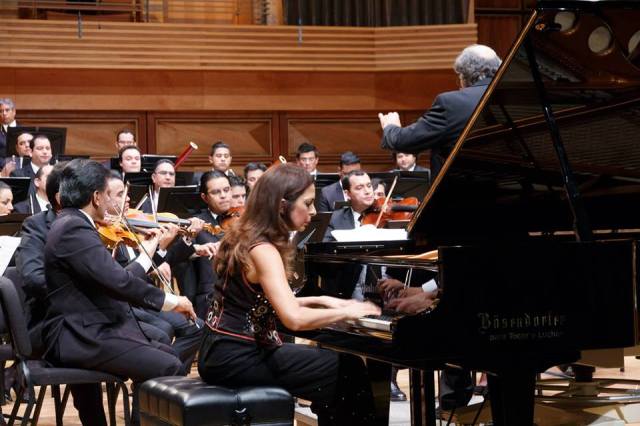
From an Amazon costumer:
“I came across this composer, unknown (at least to me) until now, when I was searching for Spanish-related music prior to a move to Spain.
The first track I listened to was Cordoba – and I was hooked straight away.
If you like Granados or Albeniz then you are very likely to love this too, especially played as well as it is here. You can almost here the sea lapping against the sandy beach under a clear summer evening in a hot climate and smell the aromas of sweet flowers and young ladies’ perfume on the air.
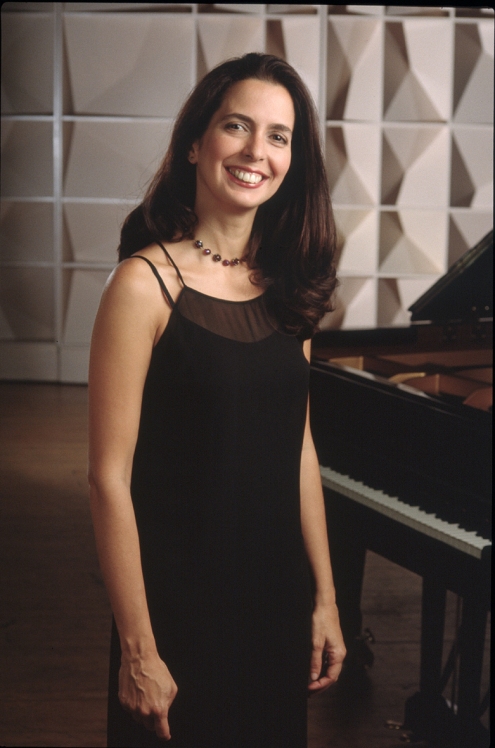
Photography by Antolin Sanchez
At other times Lecuona takes you on a fiesta type dance and gives you other mental pictures to enjoy.
Not strictly Spanish, I know, but the South American rhythms are so reminiscent of that country that I had no problem in imagining myself there again.
Don’t hesitate to sample new names like this in the classical music repertoire and I am sure you will find many undiscovered joys to behold.”
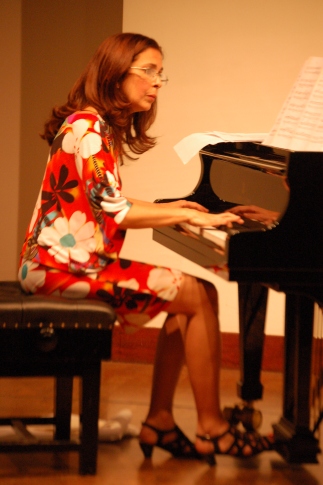
REVIEWS CDs International Piano May/June 2012
Pianist Clara Rodríguez, a fervent proponent of Latin-American piano music, is a close collaborator with contemporary Venezuelan composer Federico Ruiz. Two pieces on the disc were written for the pianist: Tropical Triptych and Nocturne. Instantly, the opening Merengue places us geographically, at least in terms of continent, as there appears to be a clear influence of Ginastera. Rodríguez projects the infectious rhythms well and the work is a satisfying length. Ruiz clearly has a pronounced sense of humour, given the title of his pieces for ‘children’(of less than 100 years). There is great charm to these pieces, and Rodríguez plays them with great affection. The expert pastiche of the Charlie Chaplin movement is a highlight, but it is Rodríguez’s convincing way with the bitter-sweet elements of this music that marks her as on home territory. The more exploratory music not only provides contrast but gives us a hint of Ruiz’s scope. The Nocturne is more chromatic and probes deeper, while the Micro-Suite is dodecaphonic. It sounds like Schoenberg but operates on a Webernian timeframe, which makes it all the more intriguing (the Passacaglia is the longest movement, at just over a minute). The Tropical Triptych puts the disc back on course with 15 minutes of liquid sunshine. Rodríguez plays the ornaments most fetchingly in the first movement, while the finale heralds a heady mix of conga, salsa and spiritual. This latter movement is compositionally as well as technically virtuoso, mixing more advanced writing harmonies with appealing rhythms. Recommended
COLIN CLARKE
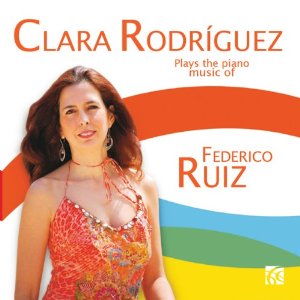
Federico RUIZ (b. 1948) Merengue (1994) [3:45] Pieces for children under 100 years of age (1982-94) [22:31] Three Venezuelan Waltzes (1981-89) [7: 03] Nocturne (1994) [8:32] Micro-Suite (1971) [4:15]
Tropical Triptych (1993) [17:10] Clara Rodríguez (piano) rec. All Saints Church, Petersham, Surrey, no date given NIMBUS ALLIANCE NI 6179 [64:06] Clara Rodríguez has been recognised for some time now as an ideal pianist to perform Latin American composers. She has performed the works of Venezuelan Federico Ruiz with fidelity and has earned the dedication of some of them; Tropical Triptych and Nocturne were written for her. The music in this recital reflects an interesting range of influences, dance patterns and stylistic affinities. Merengue, composed in 1994, establishes Ruiz’s penchant for rhythmic vitality and romantic refinement. There is a long cycle of small character pieces called Pieces for children under 100 years of age, written between 1982 and 1994. Droll as the title is, it wouldn’t matter much were the music dull. That, assuredly, is not the case. There are hints of a Latin Chopin in the opening Prelude, whilst he summons up the spirit of Chaplin (Charlot) in the second piece of the set. This turns out to be a touch of Ragtime, so it’s not properly Chaplin that’s being evoked; it seems to me, more the piano accompaniment provided in cinemas and movie theatres to some scenes from his films. Our Lady of Sorrow is properly wistful whilst there’s great charm to Magic Dream. It’s important that he establishes mood quickly in these pieces as they are all so short – none is longer than three minutes. The Dictator rides a moped is amusing for its out of control sequence; Dictators clearly can’t ride them. Debussy haunts the Encounter of Antonio and Florentino and there’s a laconic Cha cha cha further on in the sequence. Altogether this is a lively, imaginative and witty set. The Three Venezuelan Waltzes, composed during the 1980s, are disparate but bound together by their origin in the waltz. The Nocturne is somewhat different, being rather chromatic and obviously effusive, and it’s played by its dedicatee with aplomb. Very different again, indeed the work of a much earlier Ruiz, is the Micro-Suite of 1971. The five succinct movements, more succinct indeed than the children’s pieces, are decidedly Webern-like, and suggest the journey Ruiz has undertaken from this rather formalised use of twelve-tone, to his later absorption of local models and rhythms. We return, finally, to a more recent Ruiz in the shape of Tropical Triptych composed in 1993. When Ruiz conjoins rhythmic brio with lyrical intensity, as here, the results are idiomatic and exciting. His propensity for Ragtime, and a bit of Gottschalk, Ginastera and Milhaud certainly doesn’t hinder him either. To these qualities and affiliations one can add that he writes, so it seems, with considerable pianistic affinity. The performances manage to get across this vitality in well-defined recordings.
Jonathan Woolf
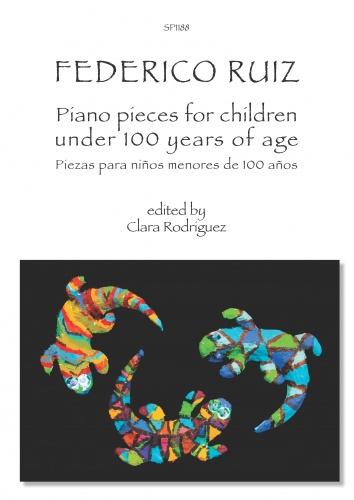
NIMBUS ALLIANCE
Chris Spector
Midwest Record
CLARA RODRIGUEZ/Plays the Piano Music of Federico Ruiz: The funny thing about this session is that you feel the fit between Rodriguez and Ruiz is like the original fit between Glen Campbell and Jimmy Webb. Playing with a passion that keeps her from coming up for air, she delivers the contemporary classic works of Ruiz with a fluidity and grace that takes things to a whole other level of the game. One of those players that makes you wonder how she can make so much sound all by herself, do not go into this date expecting it to be some wine and cheese recital music. Both the principles are on such fine display here that you can’t wait for the composer to write some more for this South American piano playing gem to tackle. A winner throughout.

Review
by James Manheim
Each Caribbean country has its own Afro-Latin dance rhythms that influenced its concert music as well as its popular styles, but Venezuela’s contributions have always been somewhat neglected internationally in comparison with Colombian cumbia or Dominican merengue. This survey of Venezuelan dance piano pieces by pianist Clara Rodríguez, covering short works from the late 19th century until the present day, attempts to remedy the situation. Her enthusiastic if wholly unedited booklet notes (in English only) quote guitarist John Williams: “Listen to it with two rhythms going simultaneously — a six-eight over a three-four. To really play this, you need to do the African thing — move your body with the complex pulse. It’s not good tapping your feet like a European. There’s a European influence here, but the guts of it is Indian plus African.” Williams was referring to the music in general, but his statement is especially applicable to the most common genre on the album, the joropo. This rhythm is little known outside of Venezuela, and it’s easy to understand why after hearing this album: if you think of the cumbia, which has become a virtual lingua franca of dance music south of U.S. Interstate 20, as the simplest of all Caribbean rhythms, the joropo may well be the most complex. As Rodríguez points out, “it consists of strongly accented rhythms and often makes use of hemiola but unlike the other Venezuelan dances, no single rhythmic pattern is associated with it”; it takes a variety of forms, all exploiting additive rhythms and hemiola tensions. Aside from the joropo there are waltzes, a merengue, a pasaje llanero, and the still more complex ritmo orquidea in Pablo Camacaro‘s Diversión (track 11). The thematic and harmonic structure of the music is simple, setting off the tricky rhythms that appear even in the waltzes. A fascinating glimpse into one of Latin America’s less-appreciated musical cultures, recommended for anyone with an interest in the music of the region.
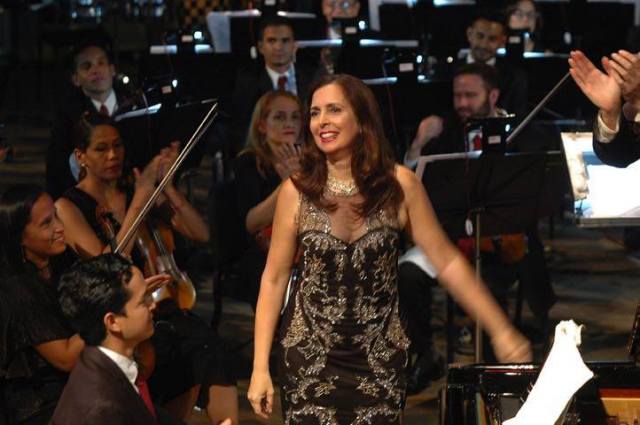
Playing Chopin Piano Concerto No 1 with the Filarmónica Nacional Orchestra under Luis Miguel Gonzalez
From Amazon customers:
A Cuban birthday treat…, 26 Feb 2013
By
Delius –
This review is from: Ernesto Lecuona Piano Works – Cuba España (Audio CD)
I have a particular affection for the music of Ernesto Lecuona; he and I share a birthday (though not a birth-date!), the only composer I am aware of who has this particular distinction.
I came across his music first via a CD from BIS of his songs, so was delighted to see this latest issue of his piano music. If anything I’m even more impressed by the content of this latest issue.
Lecuona studied with the Spaniard Joaquin Nin (whom Martin Jones has explored on Nimbus), taking his young charge to Paris in 1928 where he met Ravel. He later played for Arthur Rubenstein who recognised his quality both as a player and composer. In America during the War he worked for both the MGM and 20th Century Fox studios, writing for a number of movies, and winning an Oscar for “Always in my heart” in 1942.
The music whilst broadly “classical”, often pays tribute to Spanish and Cuban popular music with to me, frequently the air of a sophisticated nightclub or hotel soloist …..and none the worse for that! Indeed it’s superbly tuneful and attractive, frequently beautiful, and I found marvellous to relax to after a long and fraught day. Listen to the gently swaying “Minstrels” (Track 12) and you’ll see what I mean.
The sound meanwhile is excellent, although I couldn’t see any details of venue or location. The engineering is credited to “Richard Hughes” – is this the gentleman who has worked on many issues for Meridian Records? If so that explains the quality. And…. as for Clara Rodriguez…. she sounds completely inside the idiom.
I see from the inside back cover of the CD booklet there are several other issues featuring this pianist……..I’ve got a feeling my wallet’s going to be stretched a bit further…………..
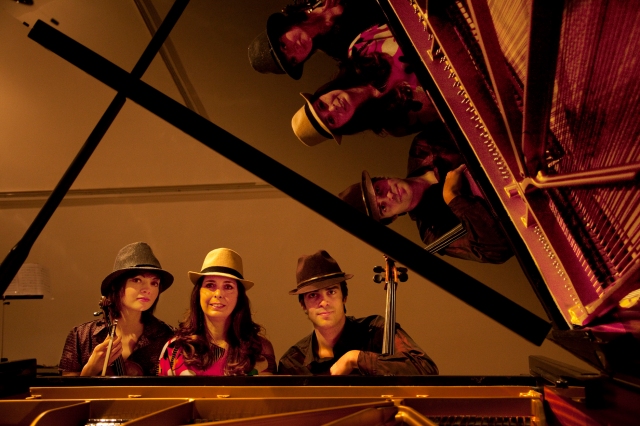
Ksenia, Clara, Jordan “In the mood for Tango” Photography by Sogand Bahram
Pleasures from Cuba and Spain, 22 Feb 2013
By
Arthur Francis –
This review is from: Ernesto Lecuona Piano Works – Cuba España (Audio CD)
What you might expect from a composer born in Cuba is a plethora of both South American and Spanish rhythms and you will most certainly not be disappointed with this disc on that score. Ernesto Lecuona’s extraordinary talent as a pianist saw him accompanying silent films from the age of seven and writing the first of his more than 400 songs when eleven. He graduated from the Havana Conservatoire at seventeen and made several tours of Latin America, Europe and the USA leading a dance band known as Lecuona’s Cuban Band. Though known today almost only by his Malagueña (either as an original song or in a piano or orchestral transcription), he achieved fame in the world of light music between the two world wars, with 176 pieces for piano, film soundtracks and music for five ballets.
The current selection of 27 relatively short pieces, including ten 19th Century Cuban Dances, six Afro-Cuban Dances and a six movement Andalusian Suite (which concludes with Malagueña) show a remarkable originality and in a piece called En tres por cuetro he displays an affinity with the opening of Medtner’s Sonata Reminiscenza, op. 38/1. Nimbus are again to be thanked for bringing these pieces to us, as indeed is the pianist Clara Rodríguez, who studied with Phyllis Sellick and at London’s Royal College of Music.
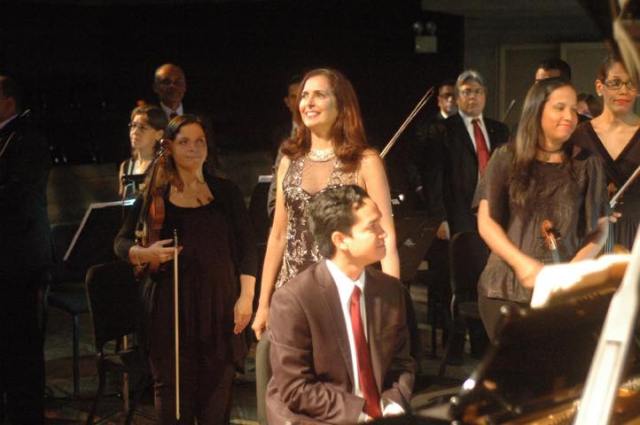
Latin American Gem
By
Wantage –
This review is from: Ernesto Lecuona Piano Works – Cuba España (Audio CD)
A really delightful disc. I am not that familiar with Cuban composer Ernesto Lecuona, but this disc left me wanting to explore his music more; and I see Clara Rodriguez has recorded piano music by several other South American composers. Full of interesting dance rhythms with elements of Debussy and also Joplin. Very original and beautifully played. Well worth purchasing and I will be looking into her other discs as well.
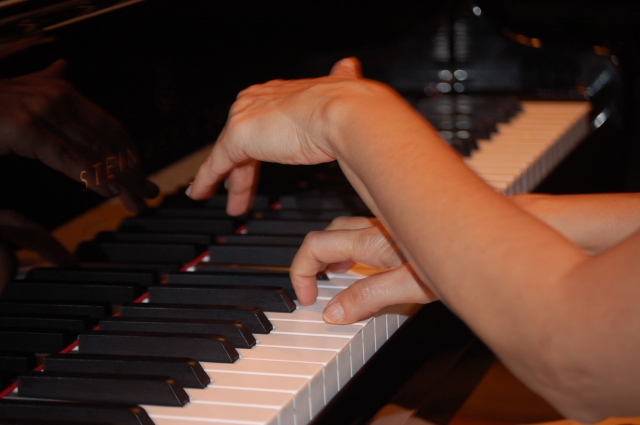
Play your cares away!, 10 Feb 2013
By
Jack L. Honigman (Manchester, U.K.) –
This review is from: Ernesto Lecuona Piano Works – Cuba España (Audio CD)
A truly delightful selection of easy listening music complemented by quite superb pianistic art. Clara Rodriguez has impeccable technique and the lyrical, rhythmic and uncomplicated melodies give her the opportunity to display fully what can be done by sheer artistry. The phrasing and delicacy combined with robustness when called for is an absolute delight and enables the busy executive, or anybody else, to submerge themselves in an undemanding lake of tranquility.
Her previous recording of the music of Federico Ruiz presented less opportunity for interpretation since it was more complex in its composition – although again, excellently played.
In short – spoil yourself! Buy it!
“Flamenco is fused with Lisztian flourish with devilishly exciting results.”
“I have enjoyed a number of Clara Rodríguezs more recent discs and I have enjoyed this one as much.
It helps to like Ernesto Lecuonas good-time music but I cannot imagine anyone, other than a diehard serialist, not liking it, or at least actively objecting to it.
If you enjoy the imposing vistas projected in Ante El Escorial, a kind of lightweight Granados, you will be delighted by both the piece and the playing.
There is real rhythmic vitality generated in Granada, with its ancillary hints of Debussy, something else that aligns the Cuban Lecuona to earlier Iberian composers such as Granados and Albéniz.
Here, too, Flamenco is fused with Lisztian flourish with devilishly exciting results.
The Danzas cubanas are full of verve and colour, and played with considerable digital clarity and stylistic acumen.
Elements of the music sound like Cubano Rags, yet others like updated Gottschalk, which is not wholly unsurprisingly since they are nineteenth-century dances.
The other two cycles are the Afro-Cuban Dances and Suite Andalucia. The former glitter ebulliently and are marked by teasing rhythms and splendidly hummable tunes.
The latter cycle is no less exciting, each movement a monument to a town or landmark and full of colour, and a very personal sense of warmth and immediacy. The movement devoted to the Guadalquivir, for instance, is rich but not over-complex thematically. Clara Rodríguez’s Lecuona selection is as fine as anyone’s”. —Jonathan Woolf, MusicWeb-International.com, February 2013

AMERICAS WITHOUT FRONTIERS CD
New release on Nimbus Records 2017
From Sonograma Magazine- Catalunya– “Americas Without Frontiers” “…the interpretative richness of the present work goes beyond the labels that could be placed on the 19 tracks of this CD where the melodic copiousness is a treasure that goes far beyond the American continent.”









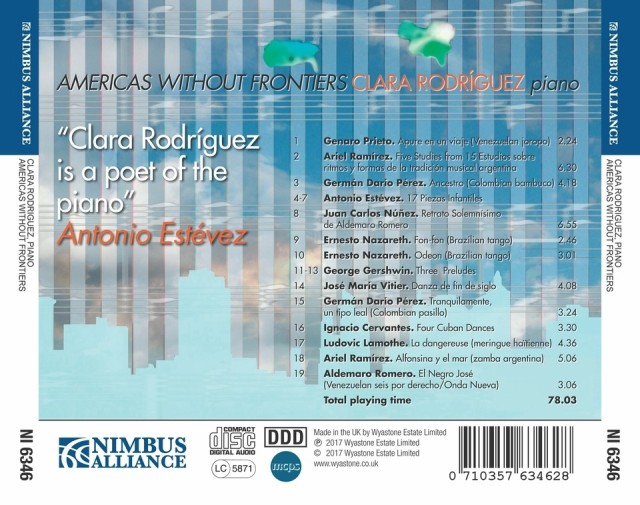































![DSC_2296[1]](https://pianistclararodriguez.files.wordpress.com/2017/12/dsc_22961.jpg?w=640)

![24271582_10210899164543816_1043933972_o[1]](https://pianistclararodriguez.files.wordpress.com/2017/12/24271582_10210899164543816_1043933972_o11.jpg?w=640)




























 Teresa Carreño. La Habana 1864
Teresa Carreño. La Habana 1864 Teresa Carreño. Boston. USA. 1863
Teresa Carreño. Boston. USA. 1863
